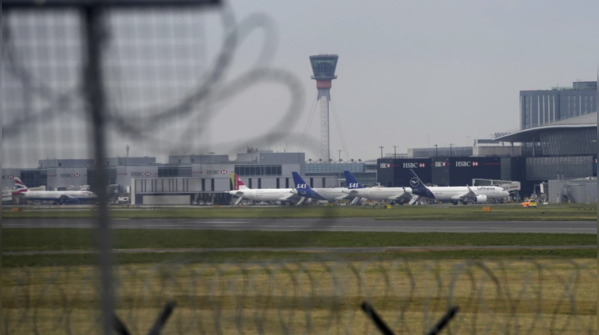World’s top 10 busiest airports
- আপডেট সময় বুধবার, ১৬ এপ্রিল, ২০২৫

Hartsfield-Jackson Atlanta International Airport (ATL)
Once again, Hartsfield-Jackson Atlanta International Airport has claimed the crown as the world’s busiest airport, handling an impressive 108.1 million passengers in 2024, a 3.3% increase from 2023. While still about 2% below its pre-pandemic traffic levels from 2019, ATL’s unmatched connectivity across the United States and beyond keeps it firmly planted at the top. (Photo -AP)

Dubai International Airport (DXB)
Dubai International Airport continued its global rise in 2024 by welcoming 92.3 million passengers, securing its place as the second-busiest airport in the world for a second consecutive year, according to Airports Council International (ACI) World report. With a 6.1% year-over-year increase, DXB’s performance reflects the region’s expanding influence in global aviation, especially as Emirates strengthens its role in connecting Europe, Asia, and Africa. (Photo-AP)

Dallas Fort Worth International Airport (DFW)
Dallas Fort Worth International Airport continues to surge, handling 87.8 million passengers in 2024, which marks a 7.4% increase from 2023 and an impressive 17% growth over 2019 levels. As a core hub for American Airlines and a vital part of the US domestic and international flight network, DFW has quickly become one of the most efficient mega-airports in the world. (Photo-AP)

Tokyo Haneda Airport (HND)
Tokyo’s Haneda Airport, one of Asia’s most punctual and streamlined travel hubs, experienced strong growth with 85.9 million passengers in 2024, representing a 9.1% increase over 2023. With the return of international travel and Japan’s revitalized tourism sector, Haneda has resumed its role as a gateway between East Asia and the world. Renowned for its efficiency, high-tech amenities, and close proximity to Tokyo’s city centre, HND continues to embody the gold standard in airport operations. (Photo-PTI)

London Heathrow Airport (LHR)
London Heathrow Airport regained its status as a vital European aviation hub, seeing 83.9 million passengers in 2024, a 5.9% rise from 2023. The airport’s passenger levels now closely resemble its 2019 figures, highlighting the steady return of transatlantic and long-haul travel. As the primary gateway to the United Kingdom, Heathrow’s sprawling terminals once again hum with the energy of global travellers, with daily flights linking London to hundreds of destinations across six continents. (Photo -AP)

Denver International Airport (DEN)
Denver International Airport posted one of the strongest domestic performances in the United States with 82.4 million passengers in 2024, up 5.8% from 2023 and a striking 19% increase compared to 2019. The airport’s strategic location and growing role as a hub for multiple carriers, including United and Southwest, have propelled its rise in the global rankings. (Photo- denver.org)

Istanbul Airport (IST)
Istanbul Airport continues to rewrite the rules of airport growth, handling 80.1 million passengers in 2024, which is a 5.3% increase from the previous year and a massive 53% leap over 2019. With Turkish Airlines expanding its global reach and the airport’s futuristic infrastructure designed to handle over 200 million passengers in the long term, IST has become the linchpin of transcontinental travel between Europe, Asia, and Africa. Its dramatic ascent reflects Turkey’s ambition to become a global aviation hub. (Photo-AP)

Chicago O’Hare International Airport (ORD)
Chicago O’Hare International Airport welcomed 80 million passengers in 2024, growing 8.3% over 2023, though still operating at about 5% below its 2019 traffic. As a key hub for both United and American Airlines, ORD continues to rebuild steadily after the pandemic downturn. (Photo -AP)

Indira Gandhi International Airport, New Delhi (DEL)
India’s largest airport, Indira Gandhi International in New Delhi, has emerged as a global player, serving 77.8 million passengers in 2024, which reflects a 7.8% increase over 2023. The airport’s growth is being driven by a rapid rise in domestic air travel and international route expansion, positioning DEL as a central hub for South Asia. (Photo – AP)

Shanghai Pudong International Airport (PVG)
Shanghai Pudong International Airport made a stunning leap in 2024, rising from 21st to 10th place in the global rankings after serving 76.8 million passengers — a phenomenal 41% increase from 2023. (Photo- chinaairlinetravel.com )

















